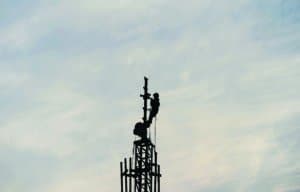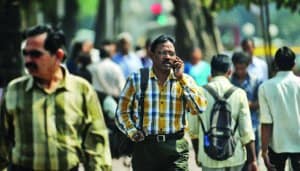We’re all Internet addicts but considering how slow broadband is in India, we can’t be called speed junkies
Pick any street or neighbourhood — any public place, really. What do you see? An ocean of heads, all looking down. Searching for answers on screens the size of their palms. And that is really the hallmark of the generation coming of age in this decade for better or worse – it’s the Internet generation. Just as the preceding one could be called the TV generation.
It’s no longer a luxury to be able to afford access to the Internet, it’s a necessity. As basic as electricity, and as important as food and water. It has become, by and large, the only unrestricted platform for free speech, and the only way to maintain worldly awareness. A boon and a bane, the Internet has wormed its way into our lives and made itself imperative to our everyday existence.
That said, India seems to be lagging behind in this particular aspect of development. According to several reports by the Economic Times and Speedtest, India stood at the 109th position of 122 in mobile internet speeds in 2017, and that remains unchanged in 2018 as well. In 2017, India was 76th in broadband speeds, whereas now we stand 67th.

However, despite this apparent improvement, India is still below the global average download speed of 42.71 mbps. There has only been a 15% increase from 2017-18 in mobile internet speeds.
Yashna Ginodia, a student of New York University, weighs in on the disparity between internet speeds in India, and where she’s staying now. She says that people in the US most likely don’t even have to worry about their internet speed. So much so that even after three years, she doesn’t know exactly what her internet plan entails – all she knows is that it’s significantly faster than in India.
POOR SPEED
People abroad barely worry about using up their wi-fi quota, unlike in India, where we have to constantly be conscious of our plans expiring. “The difference in speed is so huge that it’s like India still relies on pigeons for communication,” she says.
Yashna points out more differences when it comes to access to the internet in India and abroad. Almost all places abroad are equipped with a wi-fi connection, which does not hold true for India — even the places that do have a connection either have poor speed, or a ceiling for data usage. At airports for example, in order to access the internet, the travellers require an OTP, which at times international tourists cannot receive as they may not have functioning sims. “It’s very difficult to adjust to not having an easy and effective connection when you come back home, and you can’t rely on it to book cabs and get basic research done,” laments Yashna.
Karishma Swarup, who currently goes to Brown University, and travels to other cities in the USA to teach and perform theatre, admits that easy access to the internet has made her take it for granted. Their college gives them free and unlimited wi-fi access and she uses it for all manner of things. “Right from doing research, reading, studying, watching Netflix, using Google maps to get somewhere while I’m streaming music — I’m almost always using the Internet. Back home, it was more of a privilege,” she says. Abroad, she doesn’t have to deal with a repeatedly failing wi-fi connection or slow streaming speeds, nor does she have to worry about her workflow being hampered at unexpected times.

NARROW BANDS
The bandwidth and speed of an Internet connection is generally attributed to the size and quickness of the transfer of data packets, and the terms ‘bandwidth’ and ‘internet speed’ are fairly interchangeable when speaking of an internet connection. However, there are instances where, no matter the bandwidth allowed by the connection, the Internet connection still functions very poorly, and runs very slowly.
For instance, if the Internet service provider states a bandwidth of 40 mbps — which would mean that 40 megabytes of information can be downloaded by a particular system in one second — you might find the download speed fizzles out at approximately 20 mbps.
This disparity can be due to a few factors: it could be the quality of the infrastructure or the sheer number of people connected to that service provider or even the distance of the connection from the source.
BAD ROUTERS
This is why, despite most service providers in Delhi promising speeds of 50-80 mbps, they sometimes deliver a speed of only 16 mbps. The constantly fluctuating internet speeds could even be attributed to a bad router or the quality of the wiring installed by the company.
According to a report released by Open Signal, a mobile analytics company, the top five nations in download speeds are Singapore, Netherlands, Norway, Korea and Hungary.

India is close to the bottom of that list with an average of 6 mbps download speed for 4G. This goes to show that while 4G has made advances, our service providers and telcos have been unable to cater to the demand that has risen because of it.
BLANK SPOTS
In India however, the challenge doesn’t simply lie in the quality of the connection. There are significant sections that do not
get any kind of Internet access due to geographical inconveniences.
The leading telcos in India — Bharti Airtel, Vodafone India, Reliance Jio Infocomms and Idea Cellular — have yet to reach some of the villages and rural areas in India in order to provide Internet connections there.
Even travelling within India becomes problematic for those that are constantly in need of Internet connectivity, whether for work or study, or just entertainment. Mobile Internet speeds, which are already fairly poor in India, become worse and more expensive in some cases when travelling from one state to another, as roaming charges begin to get applied to the Internet pack that has been subscribed for.

It’s safe to say that in the race for development, the Internet features fairly high on the list of things that need to be checked off. The attachment to the internet and social media has spilled over from Generation Y and Z, and has become significantly important to the generations preceding them as well.
The Snowflake Generation is growing, and so is the ownership of this moniker. With grandparents tuning into podcasts and having more active Facebook profiles, demand for the Internet is only going to get higher, and with it awareness too.
The telecom companies better be ready for that storm, because it’s on its way. With 65 per cent of India under 35 years of age, the demand is huge.





